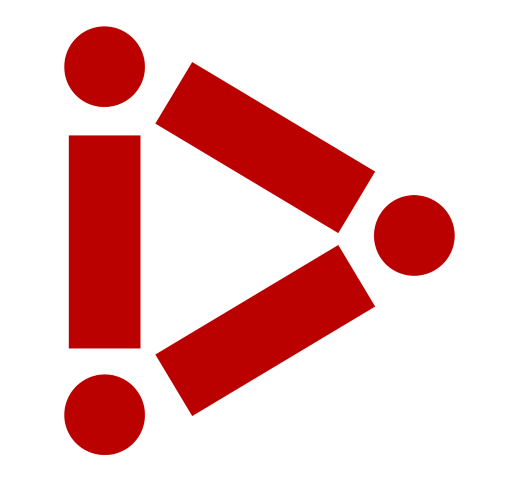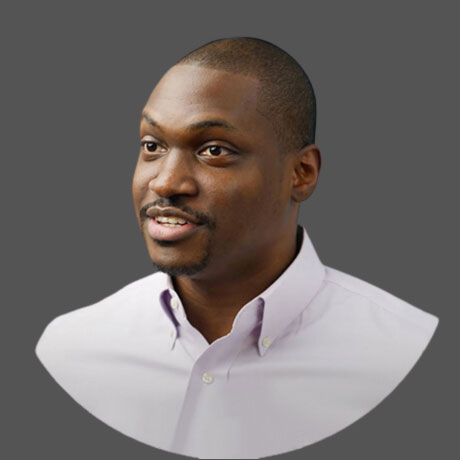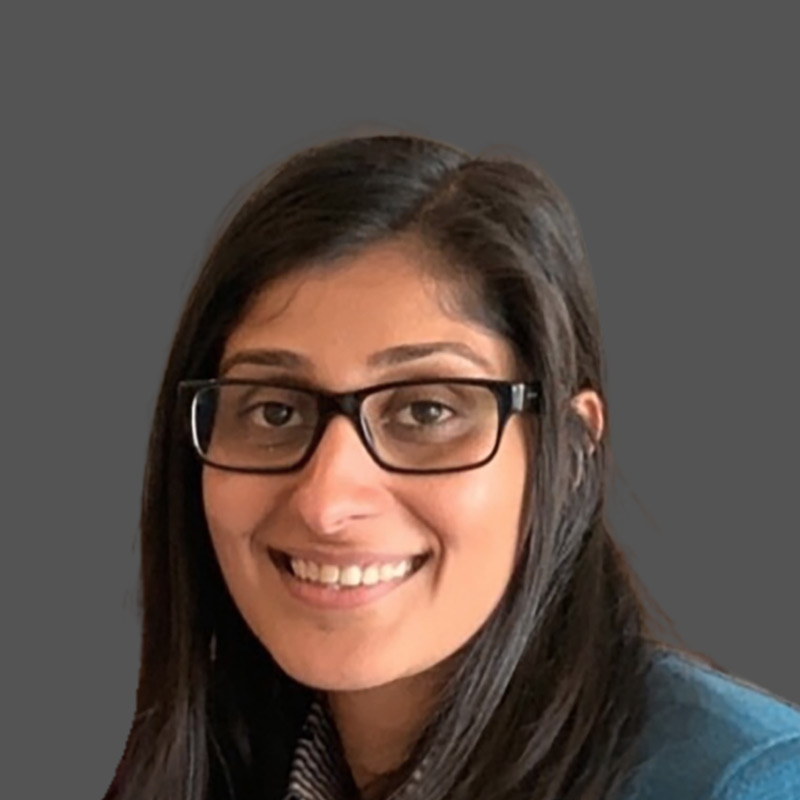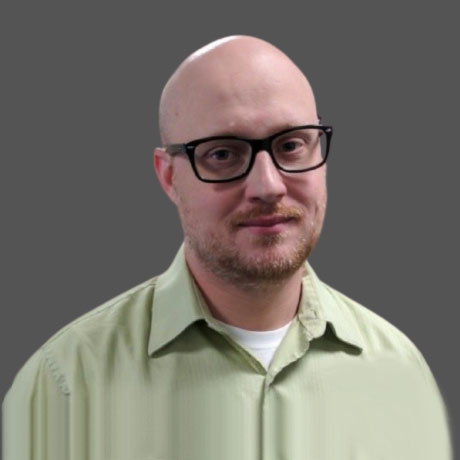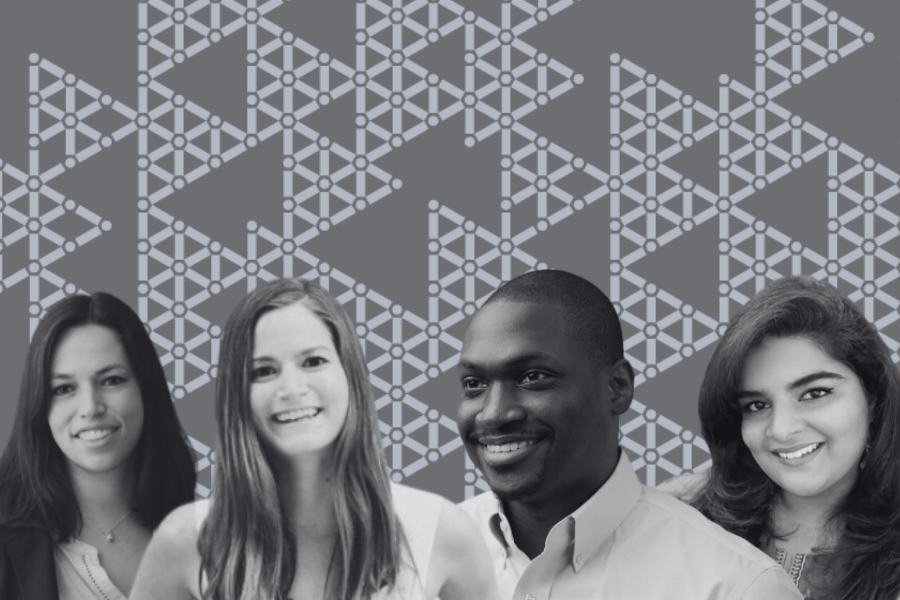
Modeling New Product Launches
Students complete new product launch plans as final projects in their Understanding Markets for Products and Services course, part of the New Product Management Certificate in the CMUiii Online program.
By Jess Ignasky
Part of the New Product Management certificate, the Understanding Markets for Products and Services course is built to teach students what's necessary to launch a product or service from a business perspective. Students in this course learn the necessary strategies and methods for building, leveraging, defending, and sustaining new products and brands. Bringing it all together, this course also emphasizes pricing strategies and understanding the needs of your target audience.
Throughout this course, students are continuously working with their classmates to complete the New Product Launch semester project. Professor David Lamont guided his students through the process of launching a new product which included a product overview, marketing and launch plan, and a finance plan.
“The things I like most about this program are the quality of the students, small class size, and high level of student engagement. The small number of teams enables me to monitor progress and guide the development of some really high-quality work,” shares Professor Lamont.
“The things I like most about this program are the quality of the students, small class size, and high level of student engagement. The small number of teams enables me to monitor progress and guide the development of some really high-quality work,” shares Professor Lamont.
Explore student’s final projects below:
Launchpad: Time Management for Children with ADHD and Anxiety
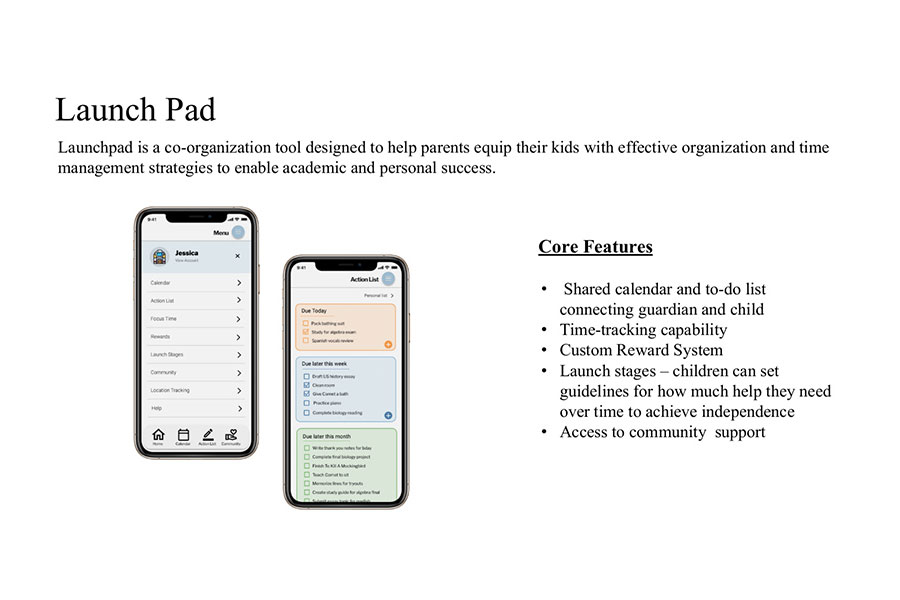
Kelsey Engbrecht (MIIPS Online ‘25)
Lizzy Klumpp (MIIPS Online ‘24)
Launchpad is a product concept developed to address the needs of parents in supporting their children with effective organization and time management strategies. The concept includes user-centered features developed to enable academic and personal success for children. While inspired by the specific needs of children with ADHD, the product’s core features provide benefits to all types of children and to the parents who support their growth.
iii: What was it like to work on a team in a remote setting?
Kelsey & Lizzy: We were separated by two time zones and working full time alongside our program, but found it very easy to stay in touch. This program is global and we’ve even had success collaborating on projects with students in other countries.
Tools like Slack made it easy for us to message asynchronously when we couldn’t talk at the same time. We used Miro and Figma to develop visual ideas for the project and to keep track of the tasks we were completing separately and those we needed to collaborate on.
Professor Lamont’s support and feedback were critical to our success in collaborating remotely as well. We were able to support each other through variable capacity and Professor Lamont’s availability ensured we had timely feedback to make iterative improvements on our product concept.
iii: Did you face any challenges working on this project?
Kelsey: The Master of Integrated Innovation for Products and Services (MIIPS) Online program puts us through intensive projects in tight timelines semester-to-semester. In this course, we explored wide-reaching concepts like user research, pricing strategies, competitive landscape analysis, and product lifecycle management.
Applying these concepts to a realistic product-based project required us to make certain decisions early in the semester. Later in the course, we were able to reflect on these decisions and consider how we would have approached the problems differently given more time or more resources.
Lizzy: Reflecting on the project, I think the most challenging step was in identifying a product concept that we were excited about that hadn’t yet been explored in the market. While we didn’t necessarily need to generate a completely novel product concept, that was our aim and ultimately helped us to build a strong business case or value proposition for the product.
The other area that was challenging and perhaps always is without funding, was sourcing participants in our target customer segment for user interviews. Ultimately, we were able to identify appropriate public platforms to post in and leveraged our networks to source users for our interviews.
iii: Have you applied the skills learned in this course to your current job role?
Kelsey: Since taking this course, I have transitioned my career towards consulting on product development and management. While my clients don’t tend to be startups, the principles I learned for developing and launching a product in that environment can provide insights and strategies to an organization of any size.
For example, it’s critical to understand the lifecycle of product profitability even if its initial development isn’t funded from outside investment. Understanding the factors that influence that break-even point can help any organization realize value from their new product launch sooner.
Lizzy: The skills and concepts covered in this course have been applicable to other courses in the program and in my career as I’ve continued to progress along the career path of product management. Given that I pivoted into product management a few years ago, what has been particularly valuable about this course and the broader program is the structure it provides. It’s been great to learn both on the job in real-time and through this program.
Indi: ADA-Friendly Learning Environments
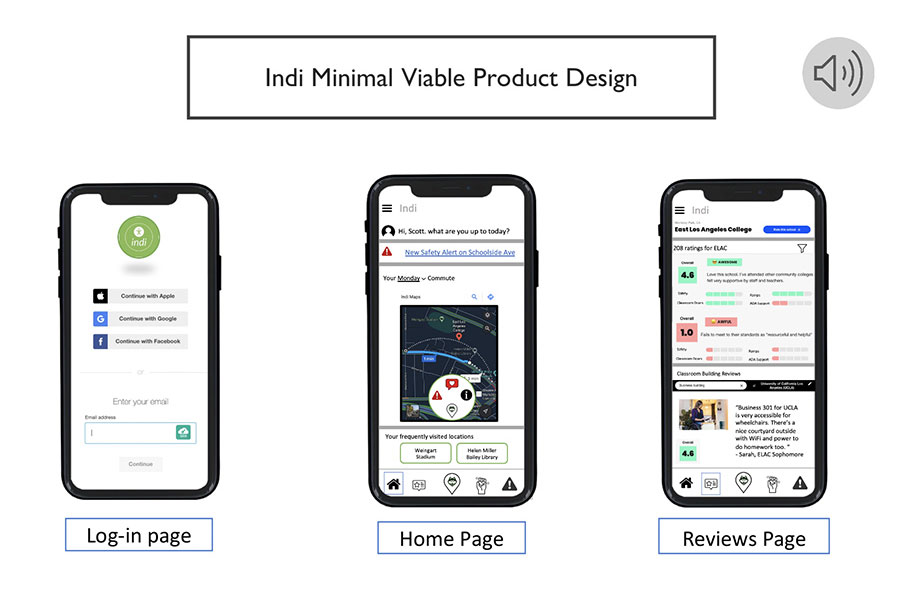
Sherry Li (MIIPS Online ‘24)
Menelik Lewis (MIIPS Online ‘24)
Madiha Irfan (MIIPS Online ‘23)
Marica Mody (MIIPS Online ‘23)
Eric Roland (MIIPS Online ‘24)
Indi is a convenient, user-friendly, and maintained web-app platform that aims to report and address accessibility issues on college campuses. It provides user-friendly interactive mapping, live reporting, and documentation of all routes with quick identification of problem areas (similar to the structure of the app, Waze). Indi works to provide a reliable outline of virtual and in-person ADA and non-ADA access paths including entrances, parking spots, pedestrian pathways, classrooms, and digital tools. The platform creates volunteer opportunities for the student community with opt-in alerts for emergency needs, and provides ratings of accessibility from real students with disabilities, including photos, tips, and more.
iii: What was it like to work on a team in a remote setting?
Professor Lamont’s course was the first course we took in the MIIPS online program and connecting with one another digitally was a new educational experience for us all. Thankfully, we were all well versed in how to connect, communicate, and collaborate digitally from the experiences we gained during the COVID-19 pandemic. As a team of 5 students who lived in various time zones across the United States, with both professional and personal responsibilities, finding a time that would work best for us as a team was optimal to our success.
We agreed upon meeting twice a week and a third day during our milestone weeks. We met early in the week, prior to our Monday evening class time, and again towards the end of the week to discuss and review our asynchronous work and ensure as a team we were aligned with our final deliverables. Additionally, we also met on Sundays to review our milestone assignments and put our presentation together.
We found that meeting via Zoom worked best for the team, as it is a simple platform which enabled us all to meet in a virtual room and collaborate on our assignments together. As the semester progressed, we not only learned about one another in a professional manner, but we began to forge friendships which fostered a similar environment to the in-person learning environment.
iii: What did you learn while working on this project?
Menelik: At the beginning of class, one of our assignments was to individually research an assigned problem category and conceptualize a product that addresses the identified challenges. As we pitched our individual ideas to our classmates, we collectively decided which ideas to work on. This provided me with valuable experience in presenting and advocating for innovative solutions within a group setting. It also enhanced my communication and persuasion skills as I learned to articulate the strengths and potential pitfalls of my proposal.
When I pitched Indi, my fellow classmates saw the potential for the idea to truly assist those with mobility challenges on campus. As we collaborated throughout the semester, the vision, technical details and core features were refined, creating a stronger, more comprehensive solution. The iterative feedback process that’s designed into the course not only enhanced the viability of the idea, but it also honed my ability to incorporate diverse perspectives into the development process.
The course offered practical experience in refining ideas. We were even encouraged to engage with the broader CMU community, as we sought additional feedback. This highlights the remarkable close-knit and supportive community that CMU provides to its students, including those participating online.
The course urged us to consider less apparent challenges and offered thorough guidance on crucial aspects of products and services. This encompassed, but was not limited to, topics on pricing and marketing strategies, comprehension of market segmentation, buyer behavior models, product launch considerations and diverse perspectives on value creation.
As a result, I gained a diverse set of technical and non-technical skills essential for effective collaboration that has directly benefited my Product Management career.
iii: Did you face any challenges working on this project?
Marcia: We faced a number of challenges while working on this project. Early on we found some major players in this space and learning about them and their platform was quite challenging, as many of these companies were not willing to speak to us. After completing the Capstone project, we understand this reason more clearly as companies are not willing to share what makes them unique with the public out of fear of losing their market share.
Another challenge we faced was understanding the need. Wanting to start here at home with CMU, we found there were many challenges when it came to speaking with the Disability Center to determine if this solution was in demand or if students were in need of such a program to help them navigate around campus. We unfortunately hit many legal blocks and were unable to speak directly with colleges and universities. However, this led us directly to the source, finding students with disabilities and speaking directly to the user vs the customers. Speaking with various students around the U.S., we found this solution is not widespread and only large campuses with large budgets have these solutions, often leaving smaller schools at a disadvantage. Additionally, this is typically where many disabled students begin their high education and thus we were able to determine the need and from there Indi was born.
The last great challenge we faced was with mapping and how we would source the data. As none of us have professional experience in this area, this was one of the largest challenges we faced throughout the semester. We spent a lot of time researching online and the realistic time and cost it would take to develop this ourselves would be a large undertaking for a start-up. We addressed this concern with Professor Lamont and he put us in touch with someone who works in the digital mapping space to help us better understand how to develop the backend system. This allowed us to continue forward with a subject matter expert to meet with. Not only did he provide us with great knowledge, but he provided insights on our work as we progressed through the project ensuring what we were building was actually feasible.
With all ideas, comes challenges, but we learned that it is how we address these challenges and the pivots we take that allowed us to continue on with this idea and build a product students desired. Additionally, we are not alone in our product journey, we learned that although you may hit a roadblock, simply asking for a little help can lead you down a path even more desirable than the one you were on. We are extremely grateful to Professor Lamot for aiding us along the way and the people he put us in touch with to bring Indi from an idea to a prototype.
iii: Did you face any challenges working on this project?
Sherry: One of the most critical skills that our project helped us refine was the art of three-phase budgeting. Creating a precise and clear-cut financial budget for a new product is often not practical given the limited or no prior data. Instead, we learned to focus on key assumptions, identifying the most crucial cost drivers and potential risks. This approach, incorporating managerial and financial accounting principles, was instrumental in developing our project's budget. It taught us to navigate the murky waters of uncertainties with a blend of data-driven assumptions, educated guesses and strategic forecasting. I especially appreciate Professor Lamont’s 'learn by doing' methodology as it not only proved beneficial in our academic pursuits but has become a cornerstone in my career, especially in building a startup. The ability to create a robust yet flexible budget, taking into account the real-world volatility and uncertainties, has been invaluable in my practice.
The understanding of market segmentation and the specific needs of our audience – in our case, mobility-impaired students – has been instrumental in my professional endeavors. The ability to discern and cater to the unique needs and values of different market segments is a skill that transcends industries and is essential for successful product design and development.
Lastly, our project underscored the importance of integrating marketing from the inception of a company. We learned that marketing is not an afterthought but a fundamental component of a product or service's journey from conception to market penetration. This was particularly evident in our approach to pricing strategies. Rather than simply setting a price, we focused on using pricing as a tool for market penetration. Understanding the nuances of the marketing mix, especially the pricing strategy, has been a game-changer in my career. In various settings, from high-level executive meetings to one-on-one discussions with internal stakeholders or potential collaborators, I was able to effectively communicate the economic value model and pricing strategy to my audience. This clarity in explanation was instrumental in getting buy-ins and shaping the zero-to-one go-to-market strategy, not only facilitating a successful product launch but also ensuring continued growth in a competitive landscape.
iii: Anything else you’d like to share about the project?
Sherry: Throughout our project, Professor Lamont's support was invaluable. His commitment went beyond the classroom; he actively engaged external experts to deepen our understanding of the problem space. This not only broadened our perspective but also provided practical insights from industry experts that were critical to our project's success. Professor Lamont's involvement didn't stop there; he made time for our team, arranging meetings to discuss our progress and providing guidance when needed. By posing critical questions, he encouraged us to explore and think deeply, fostering an environment of learning and discovery. Asking questions and actively participating in his classes and office hours can profoundly enhance your understanding and experience, just as it did for me. His ability to distill complex concepts into comprehensible insights within a short span—often under 10 minutes—is nothing short of remarkable.
Our project was elevated by exceptional teamwork, each member bringing a unique blend of skill and dedication. We thrived on collaboration, supporting each other through challenges and celebrating our successes. The connections we formed during the project grew into lasting friendships that continued beyond its conclusion. This project presented us with challenges and support, creating a rewarding journey. It was more than an academic endeavor; it was a journey of growth, friendship, and achieving something meaningful together, leaving a lasting impact on us both professionally and personally.
